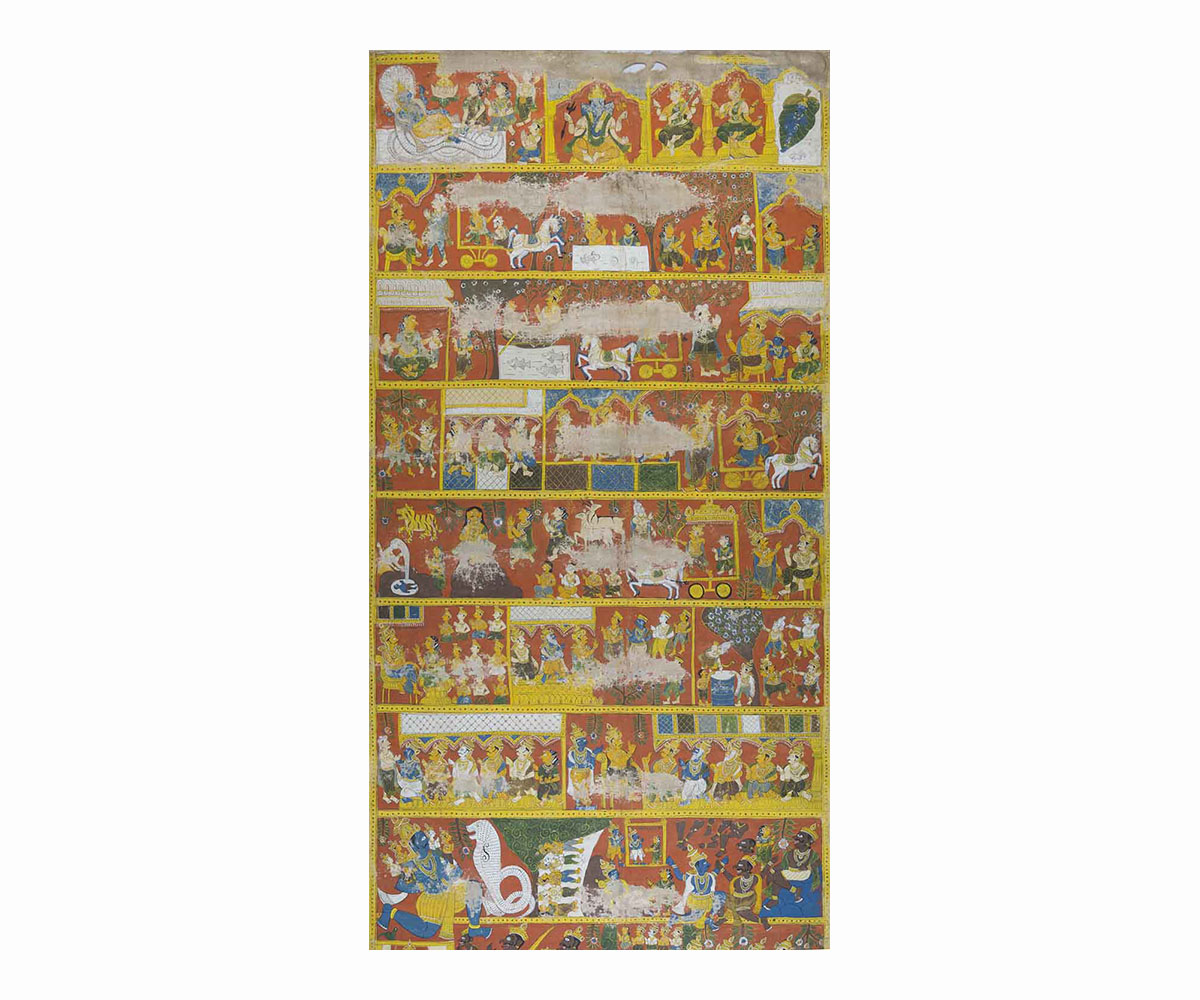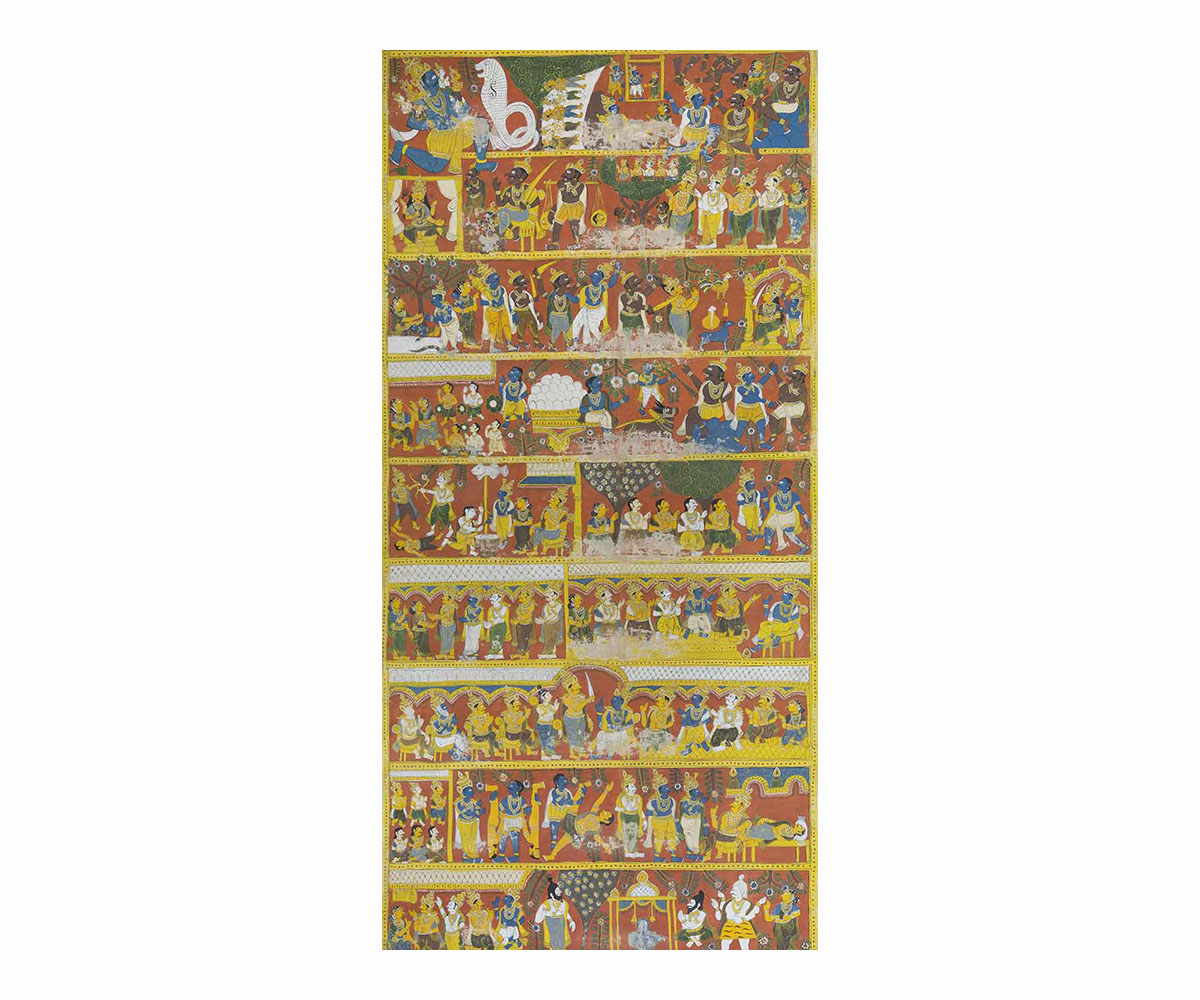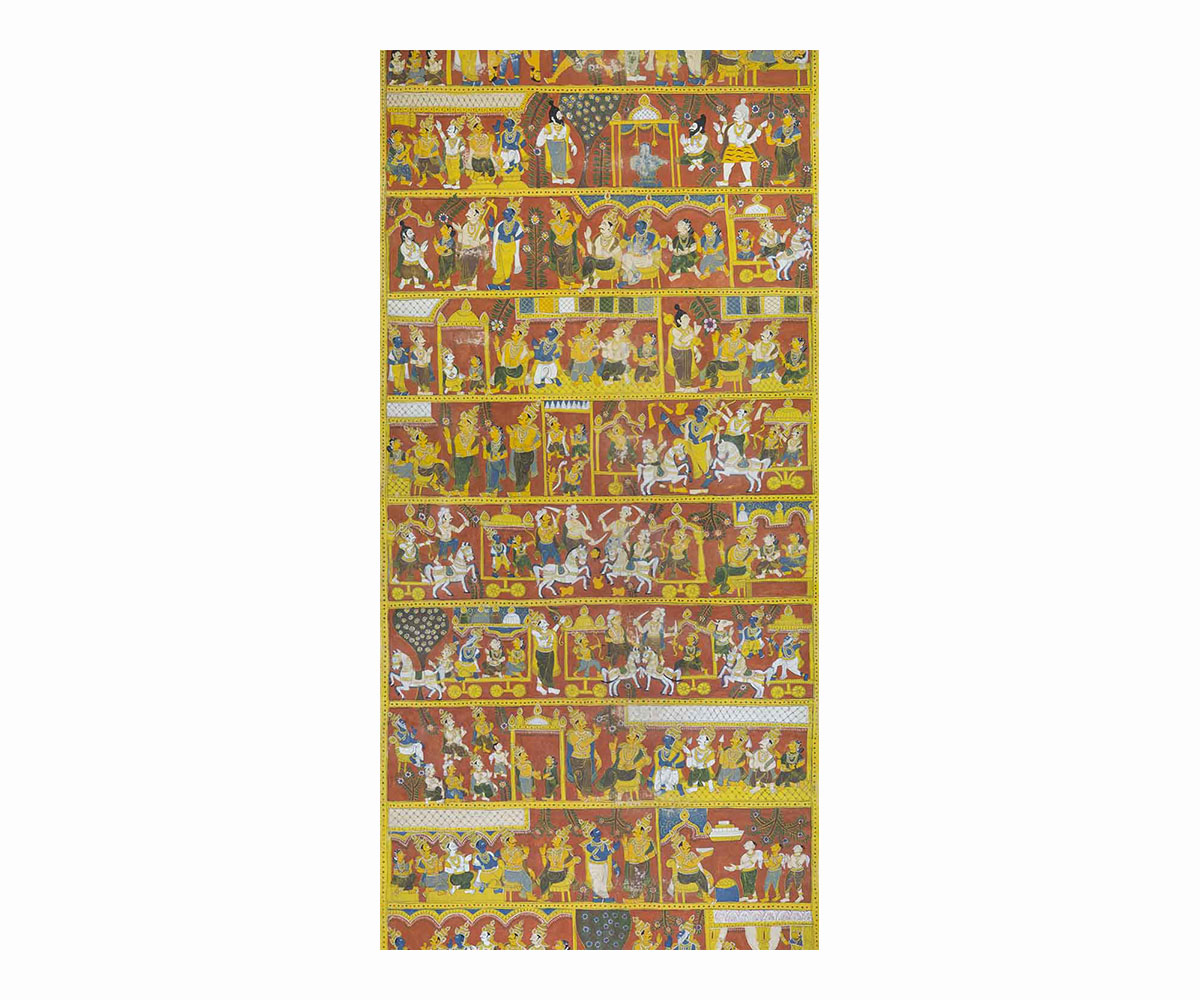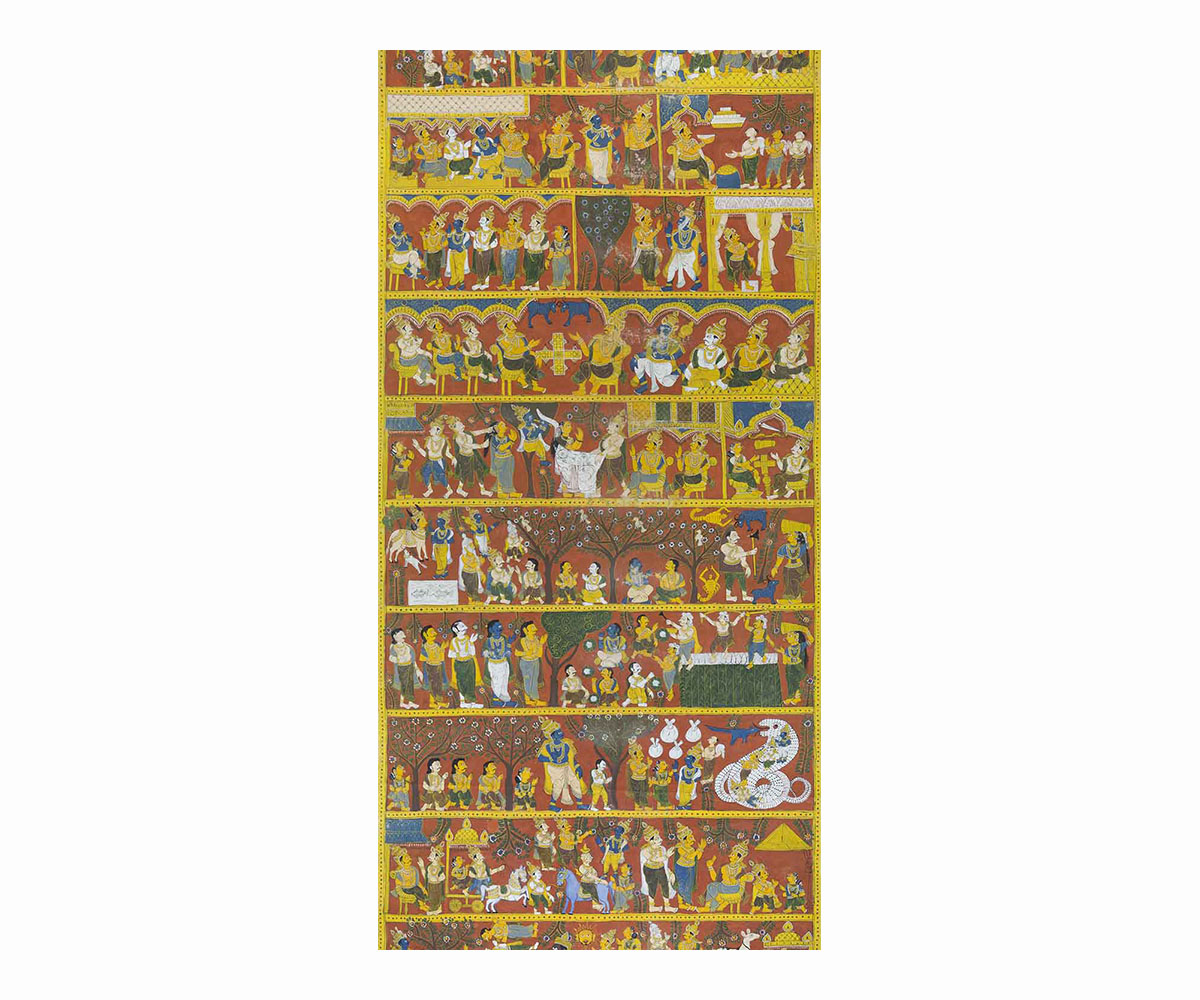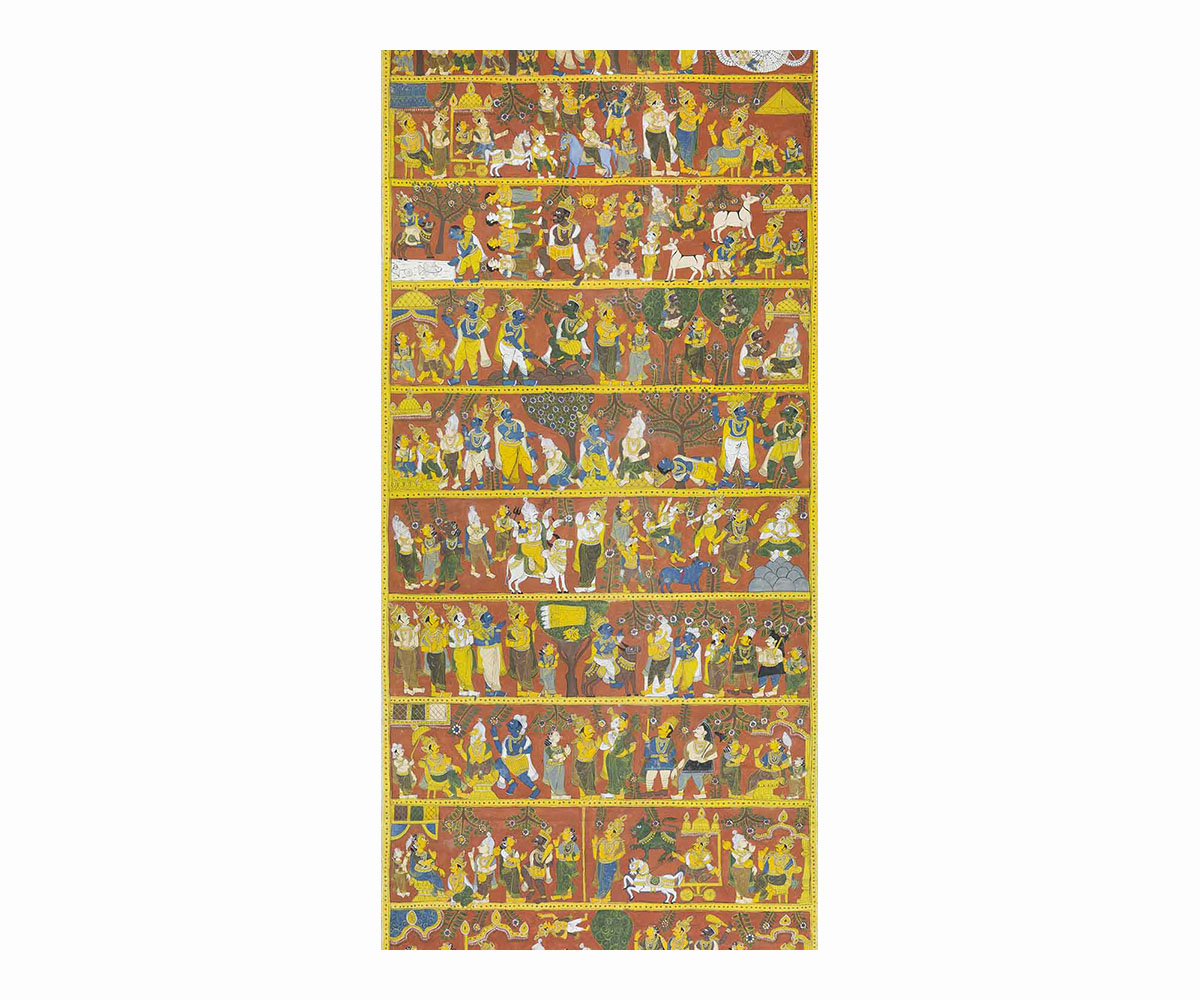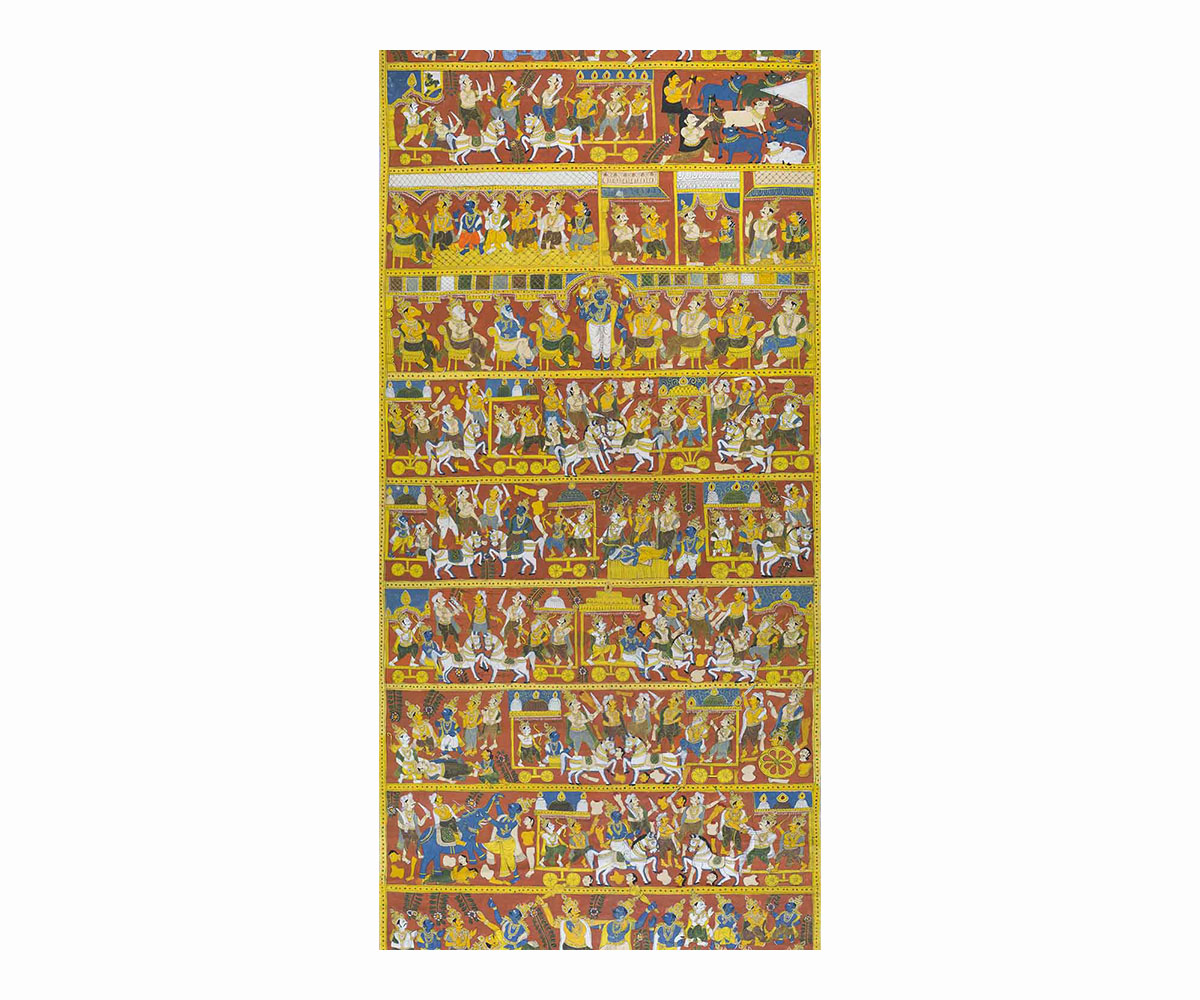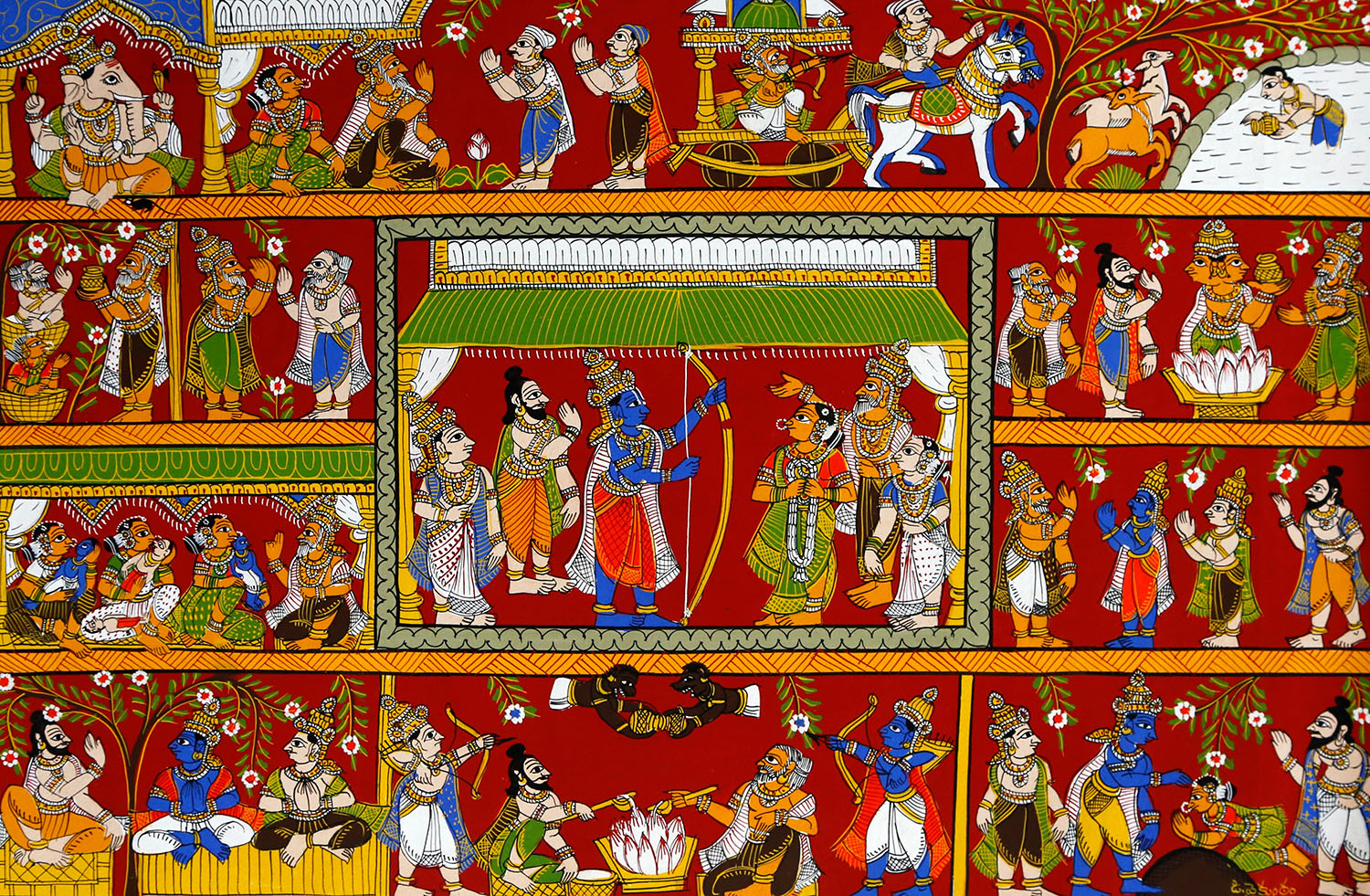ARTICLE
Cheriyal Scroll Painting
A narrative painting and performance tradition, Cheriyal scroll painting has been practised in the town of Cheriyal in Siddipet district, Telangana since the seventeenth century. Cheriyal scroll paintings are made by artists known as Nakashis, who belong to the Madiga, Goud, Mudiraj, Mala, Padmashali, Chakali and other non-dominant caste communities in the region. Their folktales form a major part of the narratives in the paintings, along with caste-specific renderings of tales from the Puranas, the Mahabharata and the Ramayana. Historically, the scrolls were used as illustrations for storytelling performances by travelling bards.
In the past, these paintings were made using handmade tools and natural pigments and materials. The perspective was flat, with elaborately dressed figures depicted in vivid colours against a red background. Traditionally, the base material was khadi cloth treated with a mixture of rice starch, tamarind paste and chalk powder, applied in two or three layers. The width of the cloth was usually 3 feet while the length varied depending on the number of panels. A squirrel hair brush was used to make thin black outlines on the fabric, after which a goat hair brush was used for painting in the details. Dyes were derived from natural sources, such as white from crushed sea shells, blue from indigo, black from soot and yellow from turmeric. While white and pink were used to paint the skin tone of human figures, other colours were used for deities and supernatural beings, some of which were specific to certain figures: black for Ram, blue for Krishna and green for Hanuman. The longer scrolls reached up to twenty metres in length and contained as many as fifty panels, each of which was unfolded as the performance progressed.
Artisans usually work in conjunction with narrators while producing Cheriyal paintings. As a rule, images of Ganesh and Saraswati were painted first, followed by Shiva, Vishnu, Brahma and other deities. Narrators then travelled from town to town, performing the scenes depicted in the scrolls. Other performers and musicians often accompanied them with musical instruments and props such as masks and puppets. These performances — and, by extension, the scrolls — were often commissioned by entire communities and were treated as a major cultural event in the area, with people coming from nearby villages or towns to watch.
Following cultural changes in India, since the 1990s Cheriyal paintings have increasingly foregrounded tales of Ram and Krishna instead of the Mahabharata. As the travelling storytelling function of the scrolls has become less relevant due to the arrival of television, cinema and the Internet, painters have reduced the size of the scrolls, often making large wall-hangings that depict one or two scenes instead of entire narratives. These are now usually made with synthetic colours on readymade surfaces like paper or plywood. To cater to tourists, artisans also make souvenirs such as keychains, dolls and masks in the characteristic Cheriyal style.
In 1976, the government of India officially recognised Cheriyal scroll painting as a handicraft practice, and accorded it a Geographical Indication tag in 2008. Other incentives to preserve the practice include providing a stipend to apprentices to learn the craft, although their number remains small. Cheriyal paintings are exhibited and displayed at government emporiums and museum exhibitions, and the craft is taught to interested students through workshops conducted by Cheriyal painters.
Bibliography
Our website is currently undergoing maintenance and re-design, due to which we have had to take down some of our bibliographies. While these will be re-published shortly, you can request references for specific articles by writing to hellomapacademy@map-india.org.




